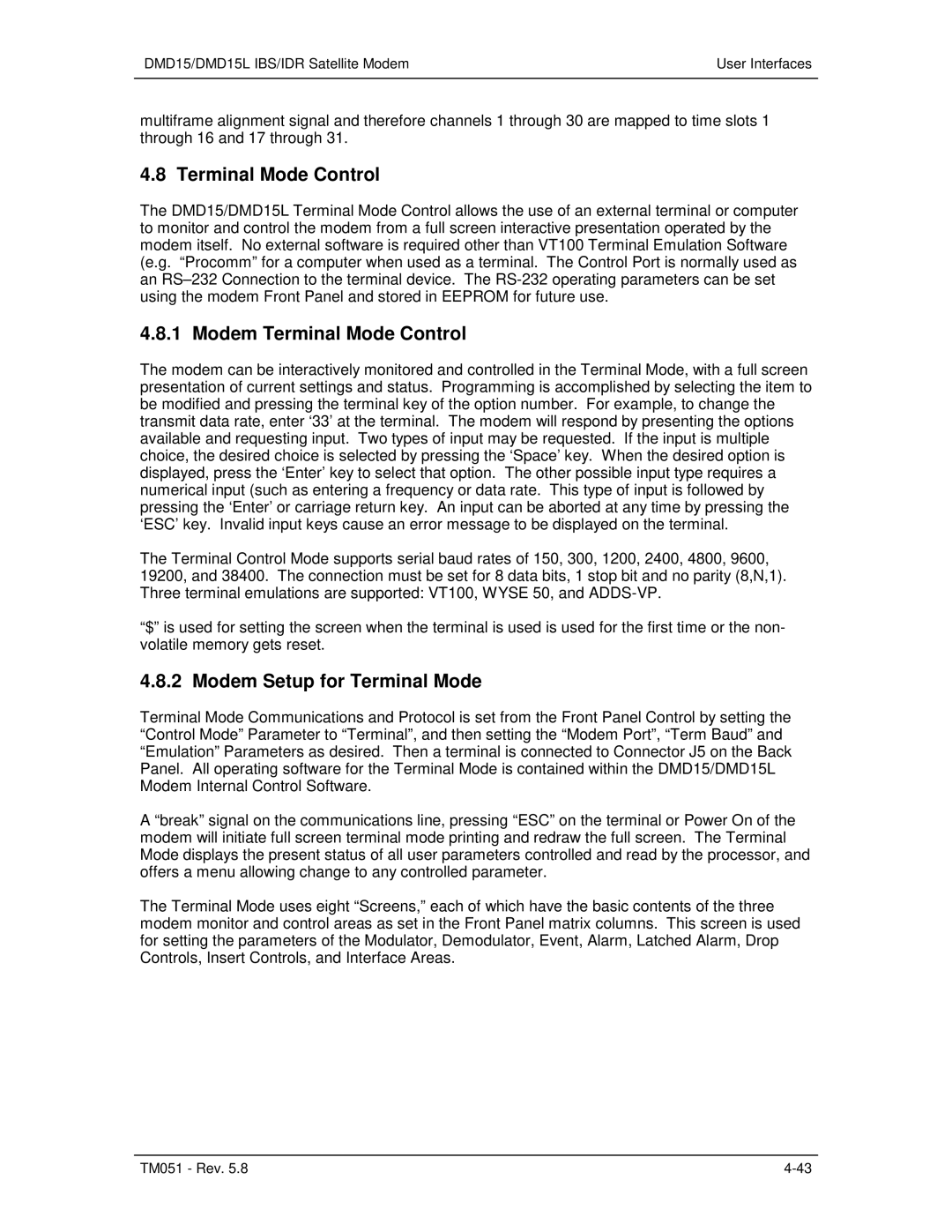DMD15, DMD15L specifications
The Paradyne DMD15L and DMD15 are advanced digital modems designed to enhance communication in a variety of networking environments. As part of Paradyne's robust portfolio of networking solutions, these devices are engineered to deliver reliable and efficient data transmission over both copper and fiber optic connections.One of the main features of the DMD15L and DMD15 is their capability to support Multiple Protocol Data Units (MPDUs), which enables them to handle a diverse range of network protocols seamlessly. This flexibility makes them suitable for different applications, from industrial automation to telecommunications.
These modems utilize advanced modulation techniques, such as Quadrature Amplitude Modulation (QAM), to maximize data throughput while maintaining signal integrity. This ensures that users benefit from high-speed connections, even in challenging signal environments. Furthermore, the DMD15 series incorporates Error Correction Codes (ECC) that enhance data reliability, effectively reducing packet loss and ensuring data coherence during transmission.
The DMD15L is particularly notable for its long-range capabilities, making it a go-to solution for users requiring extended distances without compromising data quality. It features built-in Adaptive Equalization, which automatically adjusts signal levels to optimize performance over varying transmission distances. This technology is crucial in maintaining consistent high-speed connectivity, especially in environments with variable conditions.
Both models are equipped with user-friendly interfaces that facilitate configuration and management. They support SNMP (Simple Network Management Protocol) for real-time network monitoring, allowing administrators to track performance metrics and identify potential issues before they impact users. The devices also include LED indicators for quick status checks, ensuring that users have immediate visibility of operational conditions.
In terms of physical characteristics, the DMD15 and DMD15L are designed for durability and ease of installation. They come in a compact form factor, making them suitable for deployment in constrained spaces. Additionally, their robust casing is built to withstand harsh environmental conditions, making them suitable for both indoor and outdoor installations.
Overall, the Paradyne DMD15L and DMD15 are high-performance modems that combine versatile technologies, reliability, and user-friendly features. They are excellent choices for organizations looking to enhance their communication capabilities and ensure robust data transmission across diverse networks. With their advanced functionalities and adaptability, these modems stand out as key components in modern network infrastructure.
